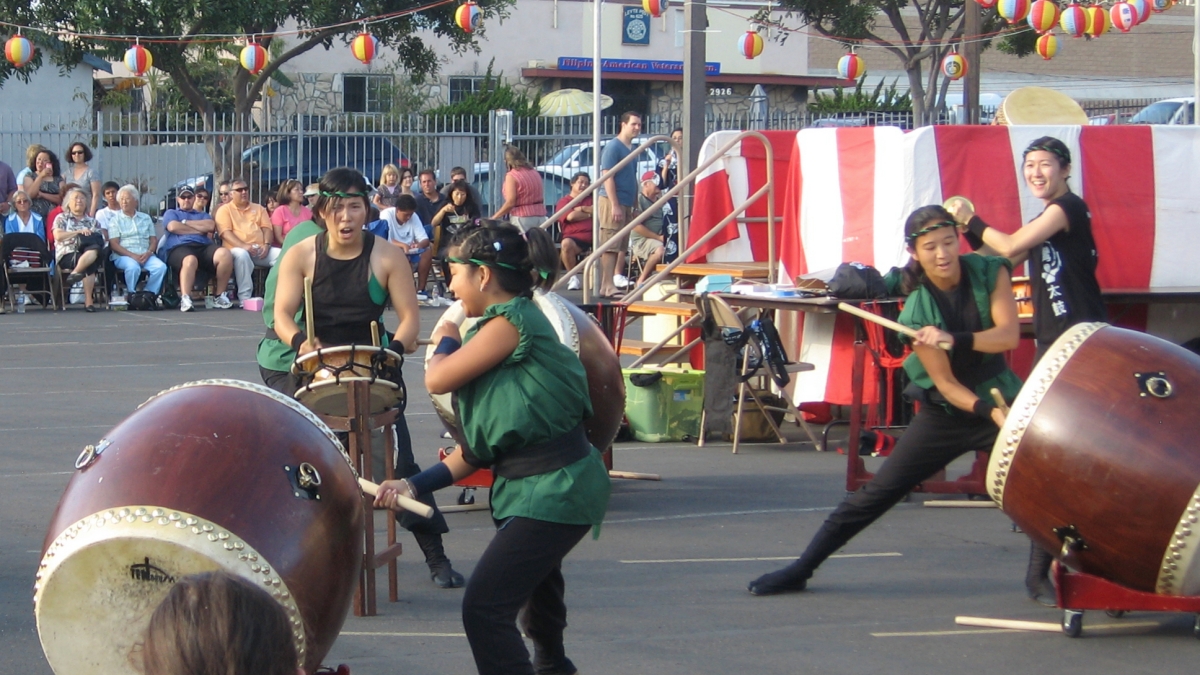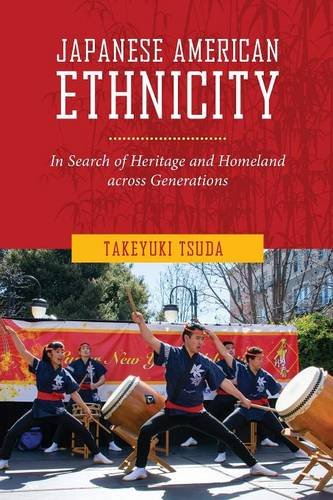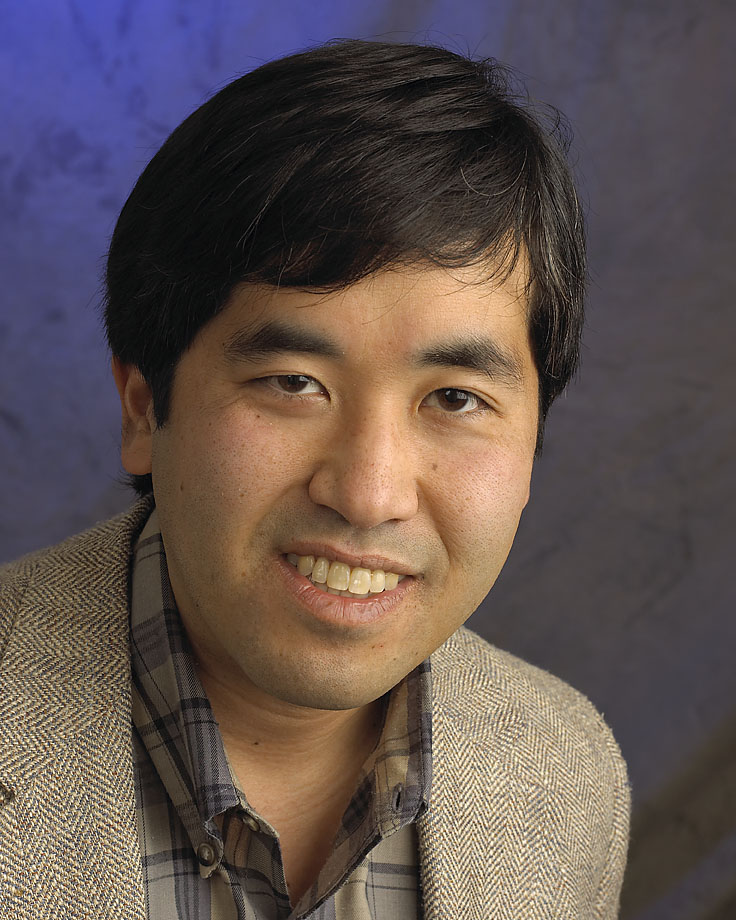From oppression to celebration: ASU anthropologist examines Japanese-American ethnic experience

Arizona State University anthropologist Takeyuki “Gaku” Tsuda’s latest book reveals that ethnic minorities’ level of connection to their ancestral heritages doesn’t necessarily decrease the longer they’ve lived in the United States.
The book, "Japanese American Ethnicity: In Search of Heritage and Homeland Across Generations," explores the different ways that second- through fourth-generation Japanese-Americans have associated with their ethnic heritage. Academic publishing company New York University Press released the work on August 12.
Now that attitudes toward cultural diversity in the U.S. have changed for the positive, he notes that Japanese-Americans are making more efforts to stay connected or reconnect with their Japanese heritage.
“My research on Japanese-Americans shows that cultural assimilation of ethnic groups in the U.S. does not necessarily erode their attachments to ancestral heritage,” said Tsuda, a professor in the School of Human Evolution and Social Change.
There are factors, however, that do affect those attachments; Tsuda’s research shows that the racism, nativism and anti-immigrant sentiment associated with WWII have impacted generations of Japanese-Americans and asks us to consider how we can avoid causing such futures for other ethnic minorities.
Ethnicity in history
The basis of Tsuda’s book is his fieldwork in Phoenix and San Diego, where he had the opportunity to explore the ethnic experiences of several generations of Japanese-Americans.
There are two categories of second-generation Japanese-Americans. The first group was born before WWII; many were placed in internment camps during the war and were subject to discrimination for years afterward. To avoid prejudice, they distanced themselves from their Japanese ethnic heritage and emphasized their fidelity to American culture, a habit that continues to impact their experiences even today.
The other second-generation group is younger; their parents were mostly businesspeople, professionals and students who immigrated to the U.S. after WWII. Unlike the prewar group, they’ve maintained their ethnic heritage by attending Japanese schools, living in Japanese expatriate communities and visiting Japan with their parents.
The third generation of Japanese-Americans continued the cultural assimilation and socioeconomic mobility of their prewar parents, so they are more “Americanized.” However, because they grew up during the postwar period when American views of Japan were improving, they feel more pride in their ancestry than their parents and emphasize it more.
The fourth generation is the one Tsuda finds most interesting. They grew up during the 1980s and ‘90s when ethnicity and cultural diversity were seen as “cool.” They are completely Americanized, yet people expect them to be in touch with Japanese culture because they look Japanese.
“They feel ethnically inadequate and are concerned about their over-assimilation. So, they are making active efforts to reconnect with their Japanese cultural heritage,” Tsuda said. “Recovering their ancestral culture helps them resolve this ethnic dilemma and becomes a source of ethnic self-esteem.”
These findings contradict the popular belief that people’s connections to ancestral culture gradually decline the longer their families have lived in the U.S. The relationship is much more complex, and is affected more by American society itself than by the time spent in it.
“Socioeconomically marginalized racial minorities have heritage cultures and ancestral homelands that may be stigmatized in the U.S., which could discourage some members of even the second generation from maintaining their ethnic heritage,” Tsuda explained.
A different direction
The professor’s path toward studying Japanese-Americans was the result of an unexpected turn. He admitted that they weren’t his first subjects of choice.
“In the past, I had little interest in Japanese-Americans. Being Japanese-American myself, they were quite familiar to me and appeared rather ordinary compared to other ethnic minorities I have studied,” he said.
Japanese-Americans are one of the oldest Asian-American groups in the U.S. Typically, they are highly assimilated, well educated, middle-class citizens, and they no longer suffer from widespread discrimination. Instead, Tsuda was studying Japanese-Brazilians in Japan and Brazil. However, in the midst of that project, he realized he could do a comparison study of Japanese-Americans and Japanese-Brazilians to examine the diaspora, or scattered population, of Japanese descendants in the Americas.
“Once I started fieldwork among Japanese-Americans, I was drawn to and fascinated by their contemporary ethnic experiences. They were much more interesting people than I anticipated!” he said.
That fascination turned his preliminary research among Japanese-Americans into an entire project of its own and led to a full-length book.
Professor Tsuda
Bringing it home
In order to conduct fieldwork, Tsuda connected to local Japanese-American communities in Phoenix and San Diego through both personal contacts and observation of Japanese ethnic organizations.
“Everyone was very receptive to my research; they let me into their communities and lives and were willing to talk to me for long hours about their experiences,” he said.
The Japanese-American community in San Diego is larger, more cohesive and more active compared to the one in Phoenix, so Tsuda was amazed to see no major differences in the contemporary ethnic experiences of the Japanese-Americans living in the two cities. The main difference is that, due to Arizona’s smaller Asian-American population, Japanese-Americans in Phoenix are more likely to be mistaken for foreign immigrants.
That doesn’t mean that you can discount the Japanese American community here, though.
“Although no one associates Phoenix with Japanese-Americans, I was surprised to see there is a significant community here with notable ethnic organizations and activities,” Tsuda said.
This community has been around since the early 1900s and is almost as old as its counterpart in San Diego. Its history here holds a dark secret.
“One fact about Japanese-Americans in Phoenix that few know about is that when war broke out with Japan, the U.S. government drew a line right through the middle of Phoenix and incarcerated Japanese-Americans living west of the line in internment camps but allowed those living east of the line to remain in their homes,” he explained.
That line hits close to home, literally. It ran down Grand Avenue and right past ASU’s Tempe campus.
“I interviewed one elderly man who lived east of Grand Avenue before World War II and was allowed to stay in his home, while his neighbors on the west side of the street were thrown into internment camps!” he said.
The Valley’s Japanese-American community withstood these trials and grew into the modern community that Tsuda was able to study.
New beats on old drums
One of the ways that Tsuda studied Japanese-Americans’ performance of ethnic heritage was by observing their participation in taiko drumming ensembles. Taiko is a traditional form of Japanese drumming and goes back to ancient times in Japan. He was blown away to discover its popularity here in the U.S.; it has transformed into the main cultural heritage activity for young Japanese-Americans. He notes that although taiko is oriented in the Japanese tradition, the ensembles here still reflect the influence of America.
“Japanese-American ensembles have modernized traditional taiko, so to speak; they have mixed it with Western instruments and incorporated American rhythms from jazz, blues and hip hop. So it is very different from taiko in Japan and expresses a unique, Japanese-American identity and history.”
Tsuda’s next step is to return to his original project idea: a comparative study of Japanese descendants in Brazil and the U.S.
“In a few years, I would like to return to Brazil and further study Japanese-Brazilians and then compare them with Japanese-Americans as the two largest groups of Japanese descendants in the Japanese diaspora,” he said.
Though they share the same ethnic origins, the two populations have gone through different processes of racialization, discrimination and ethnic stereotyping over the course of their countries’ histories. He hopes to figure out why the Japanese-Brazilian population has a stronger ethnic identity and attachment to Japan.
For those of us living in the United States, however, Tsuda offers a word of inspiration, encouraging us to start thinking of our ethnic heritages in a new way.
“Ethnic heritage is not simply something that is important for second-generation descendants of immigrants. It can be relevant for Americans who are third and fourth generation, or older.”



